Whip up a plate of Malaysian comfort street food with our Char Kway Teow recipe! It’s packed with all the bold, smoky flavors you love, a perfect balance of savory and sweet, juicy prawns, and a nice touch of heat, all tossed with soft yet chewy noodles. It’s super easy to make at home, so you can enjoy this iconic street food whenever the craving hits!
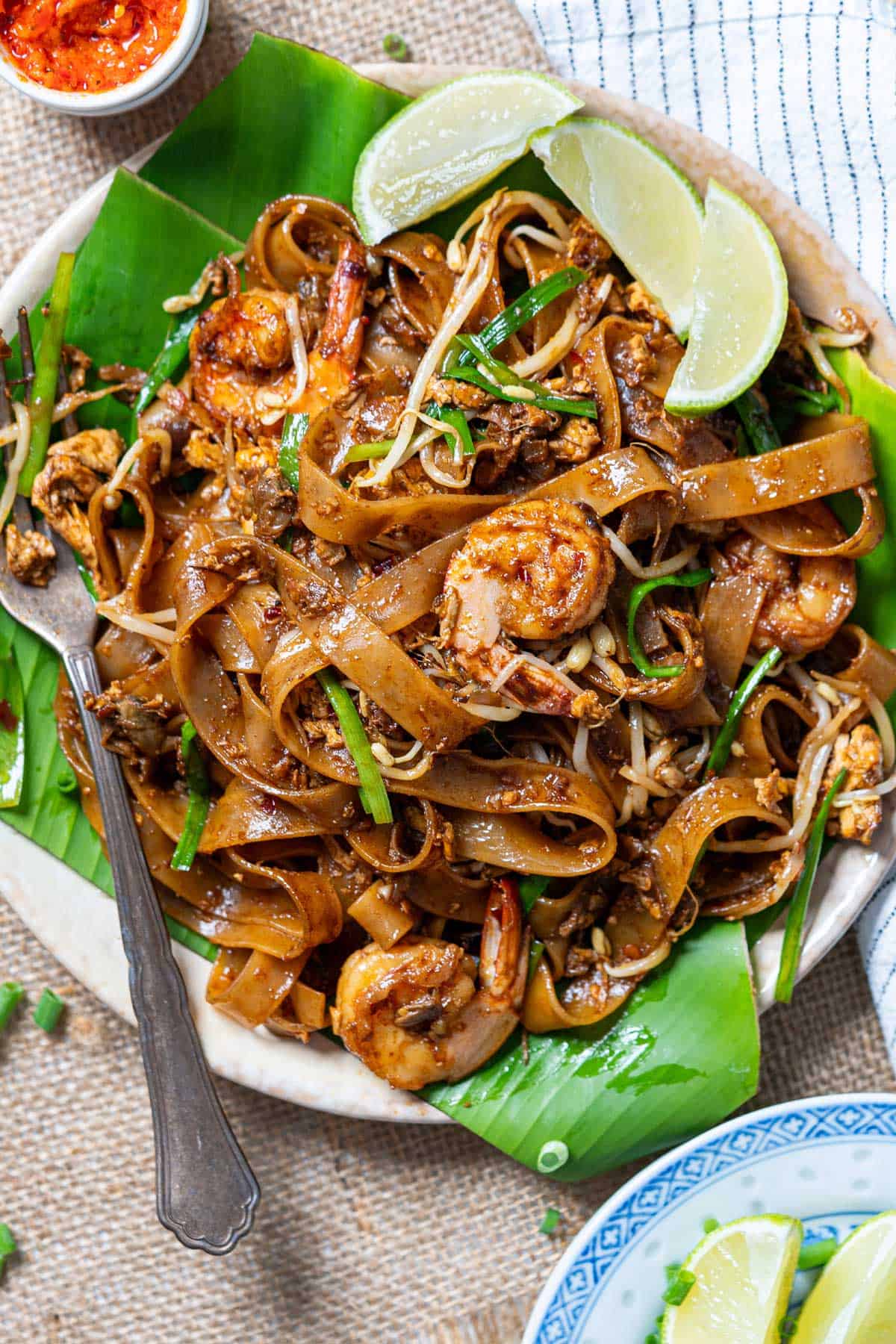
📮 Save this recipe for later!
★★★★★
Kway Teow is one of my favorite dish in Singapore. Since I went back to Phils 3 years ago, Ive been craving singaporean foods that I normally eat from the food courts...This one is legit Kway Teow recipe...I cant believe it's so simple to follow...craving satisfied...highly recommended!!!! Thank you for sharing your recipe....
- Virna
What Is Char Kway Teow?
Char kway teow or char kuey teow is a stir-fried noodle dish popular in Southeast Asia, just like pad Thai, but it's particularly known in Malaysia and Singapore. It's a smoky, stir-fried noodle dish that combines savory, sweet, and umami flavors. It's a Chinese-style stir-fry noodle; "char" means stir-fried, and "kway teow" refers to flat rice noodles. The noodles absorb the deep, caramelized notes of soy sauce and garlic, while the high-heat cooking imparts a distinctive charred "wok hei" flavor.
It is an affordable dish with basic ingredients like rice noodles, bean sprouts, garlic chives, shrimp, and cockles. Its delicious flavors come from a flavorful sauce made with soy sauce, oyster sauce, and fish sauce, while the spiciness comes from chili paste.
There are two versions of it: dry and saucy, or in Malay, "char kway teow basah/banjir." For this recipe, I'm showing you how to make the dry version that's also known as Penang char kway teow.
Why You'll Love This Recipe
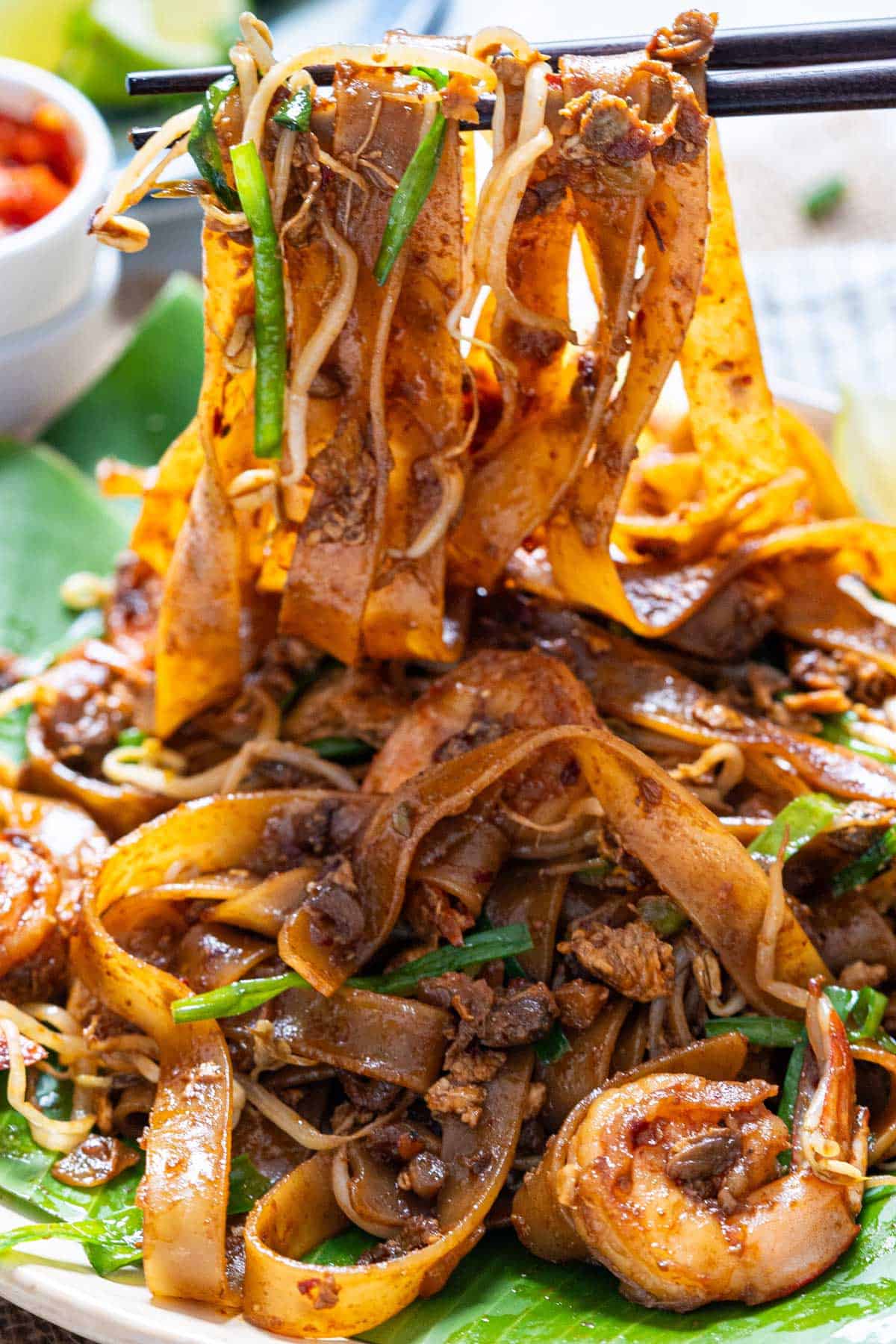
I was born and raised in Malaysia, so I've been eating char kway teow my entire life! I've been working on perfecting this recipe so that I can continue to enjoy it with my family here in Spain. Here's why we think you'll love it as much as we do!
Delicious—It is incredibly flavorful, with a bold combination of smoky, savory, and sweet flavors. The contrasting textures of soft, chewy, flat rice noodles and crispy bean sprouts add another layer of experience!
Easy and doable anywhere—By understanding the flavors and roles of each ingredient, we've simplified the ingredients for this recipe while preserving the essential flavors of a delicious Penang fried kway teow, just as we preserve the flavors for our easy beef pho. This makes it doable anywhere, not just in my home country, Malaysia.
Ingredients For This Recipe
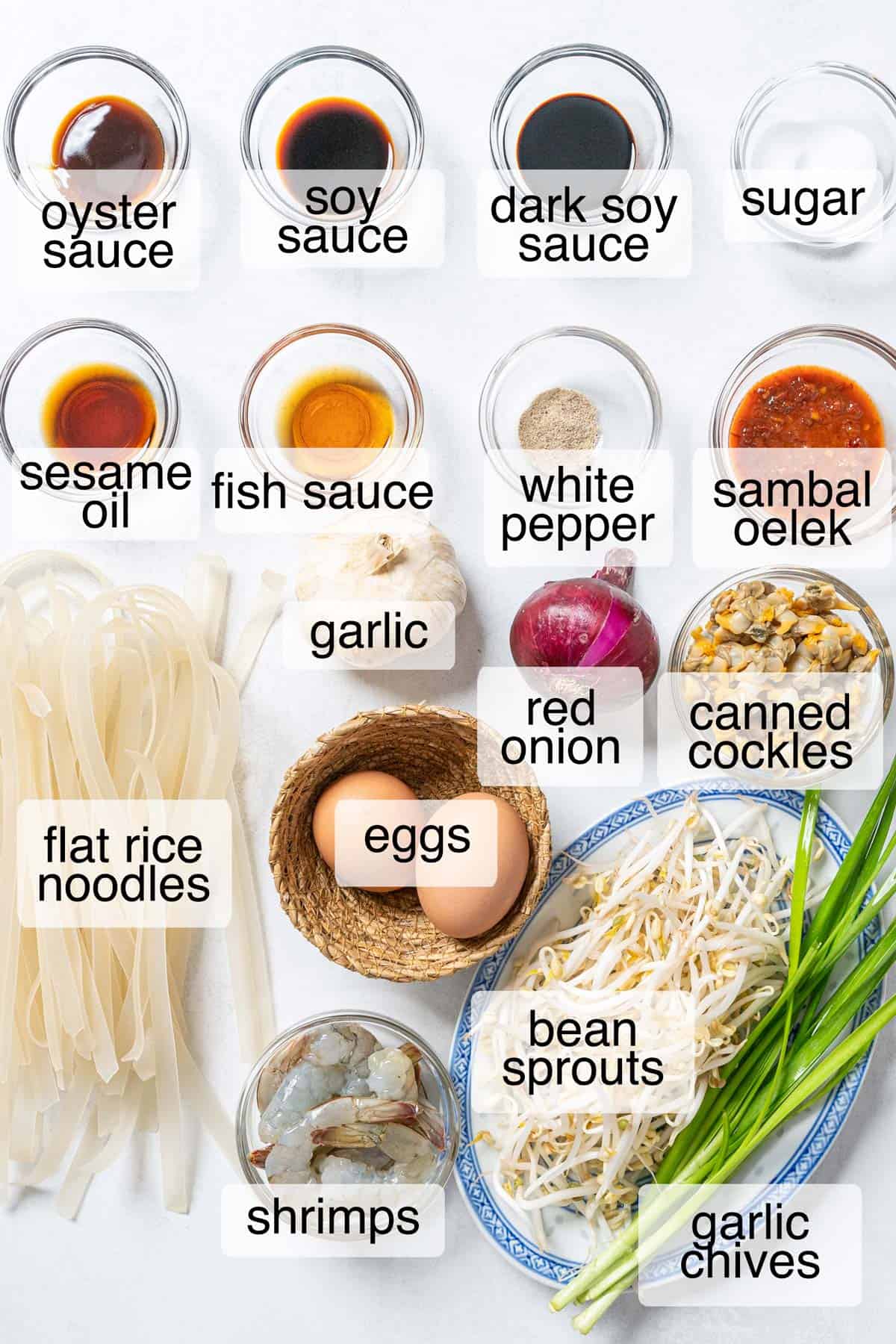
Flat rice noodles—They are crucial in this recipe. Typically, ½-3/4-inch noodles are used, but no worries, we've used as thin as ¼-inch noodles, and they work amazingly great, like we use in our peanut sauce stir-fry noodles.
Cockles—Traditionally, fresh blood cockles are used, but we want this recipe to be easy and doable for everybody, anywhere. Therefore, we're using neutral canned cockles since they taste the same. It's a common ingredient in supermarkets and saves us work!
Soy sauce—We opt for low-sodium soy sauce when our recipe requires soy sauce for flavoring, like in our crispy air-fryer soy sauce chicken and Thai basil beef. This allows us to add more flavor without concern about the dish becoming too salty. When using regular soy sauce, start with half the amount, taste and adjust as needed.
Dark soy sauce—It's optional. We use it so the noodles are darker in color.
Oyster sauce—It's rich in umami flavor, with a touch of sweetness, and is thick in consistency. It's essential in this recipe and a staple ingredient in Asian cooking.
Fish sauce—Like soy and oyster sauce, fish sauce adds the umami component to this recipe. It doesn't taste like fish, so don't worry!
Sambal oelek—Optional; it gives our char kway teow a subtle heat. It's typically on the salty side, so if you're omitting it, please use 1 tablespoon each of less-sodium soy sauce, fish sauce, and oyster sauce. Alternatively, you can use sriracha and our Malaysian sambal paste, which is our favorite!
Veggies—This stir-fry recipe is super fast, so the best vegetables to use are bean sprouts and garlic chives, although common chives work great, too. They cook very quickly and don't release water, making our noodles soggy. If fresh bean sprouts are hard to find, you can use the ones in a jar, like we use in our delicious easy mee goreng.
See the recipe card for complete information on ingredients and quantities.
Step-By-Step Instructions
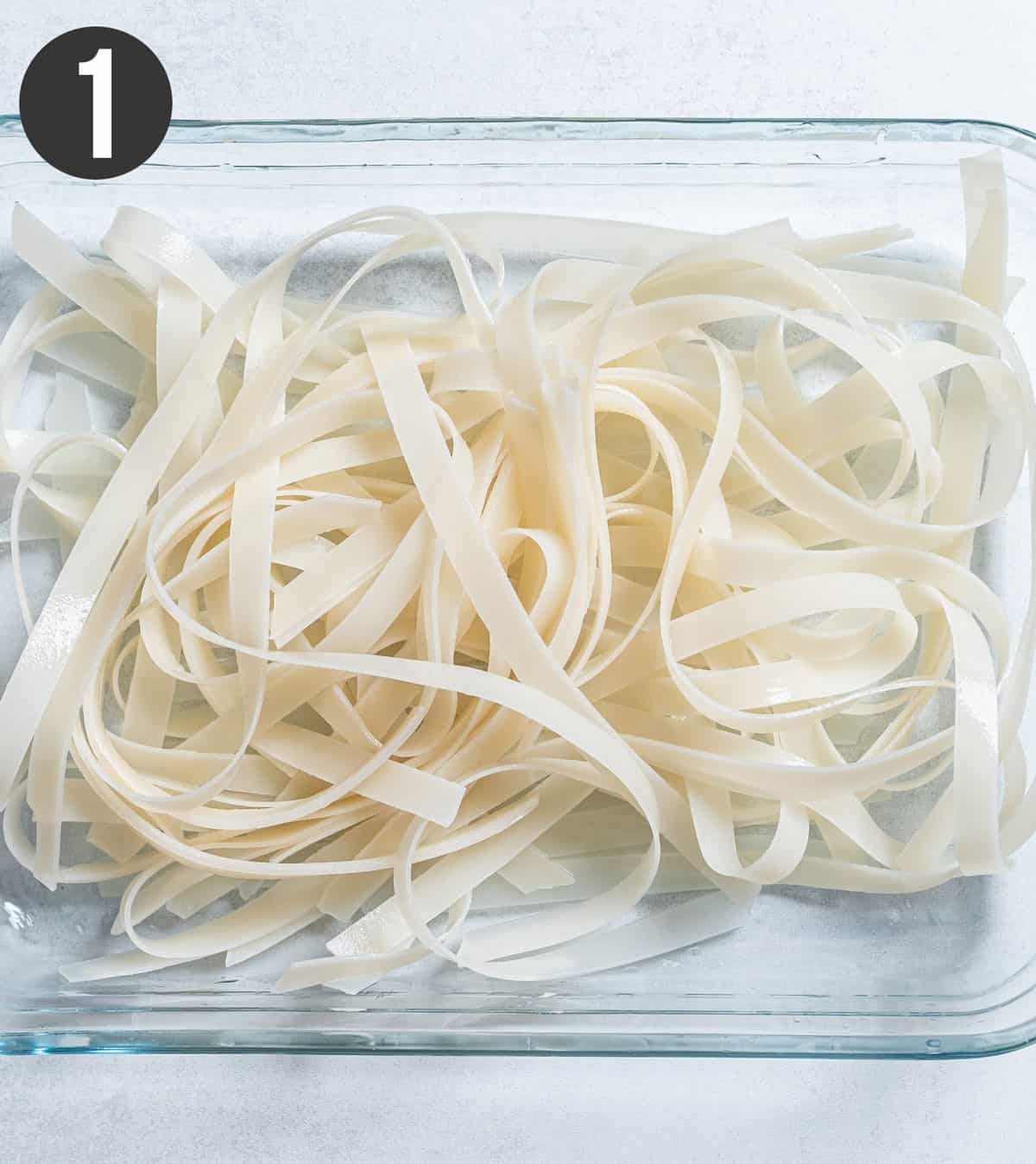
Step 1: Soak the dried noodles. Soak the noodles with room temperature water until they're pliable, for 30-45 minutes. Alternatively, soak them in warm water for 8-10 minutes. The estimated time varies according to the noodles' brands. Drain before using.
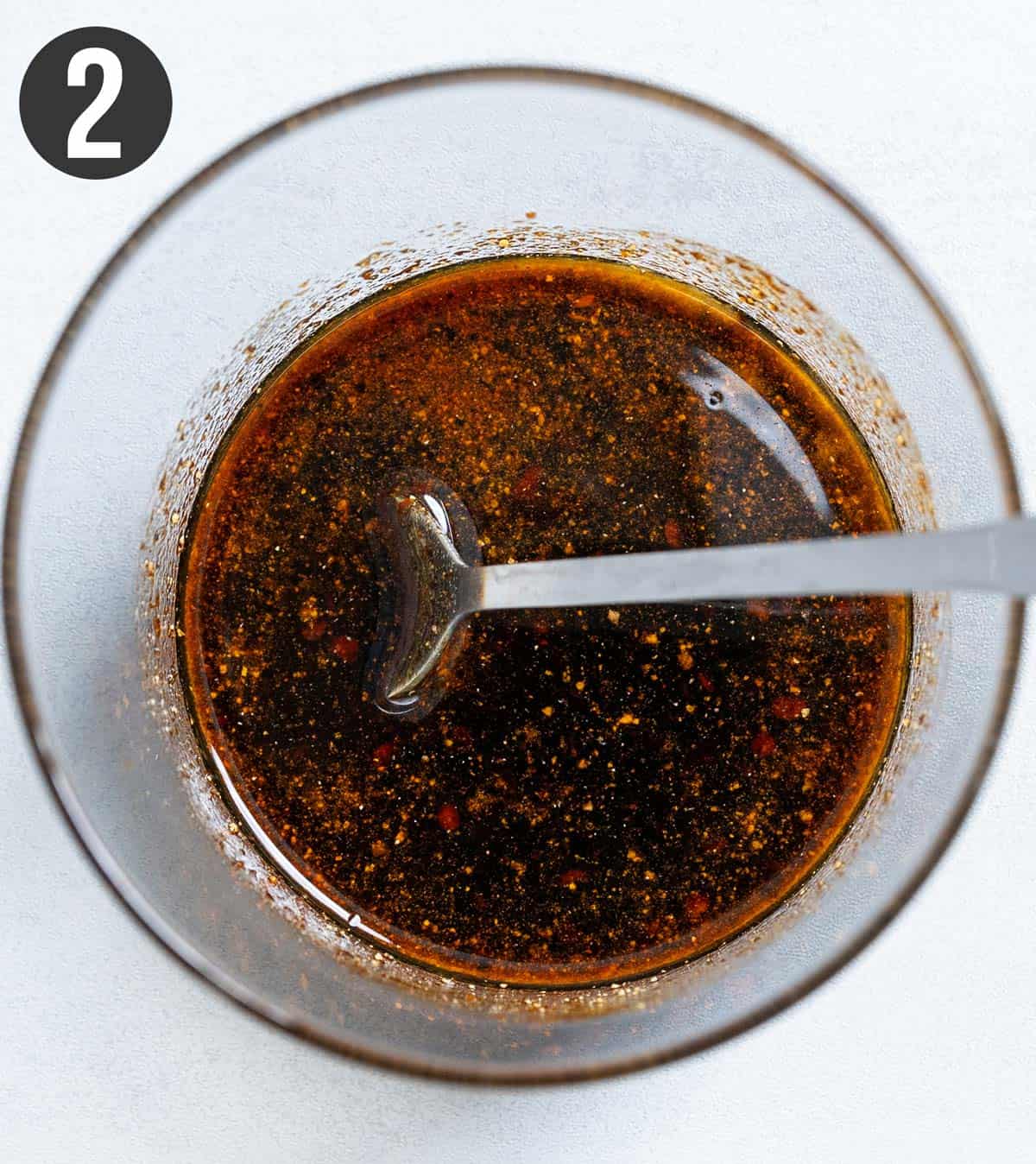
Step 2: Make the sauce. Mix less-sodium soy sauce, dark soy sauce, oyster sauce, fish sauce, sesame oil, white pepper, sugar, and sambal oelek, if using, and set aside.
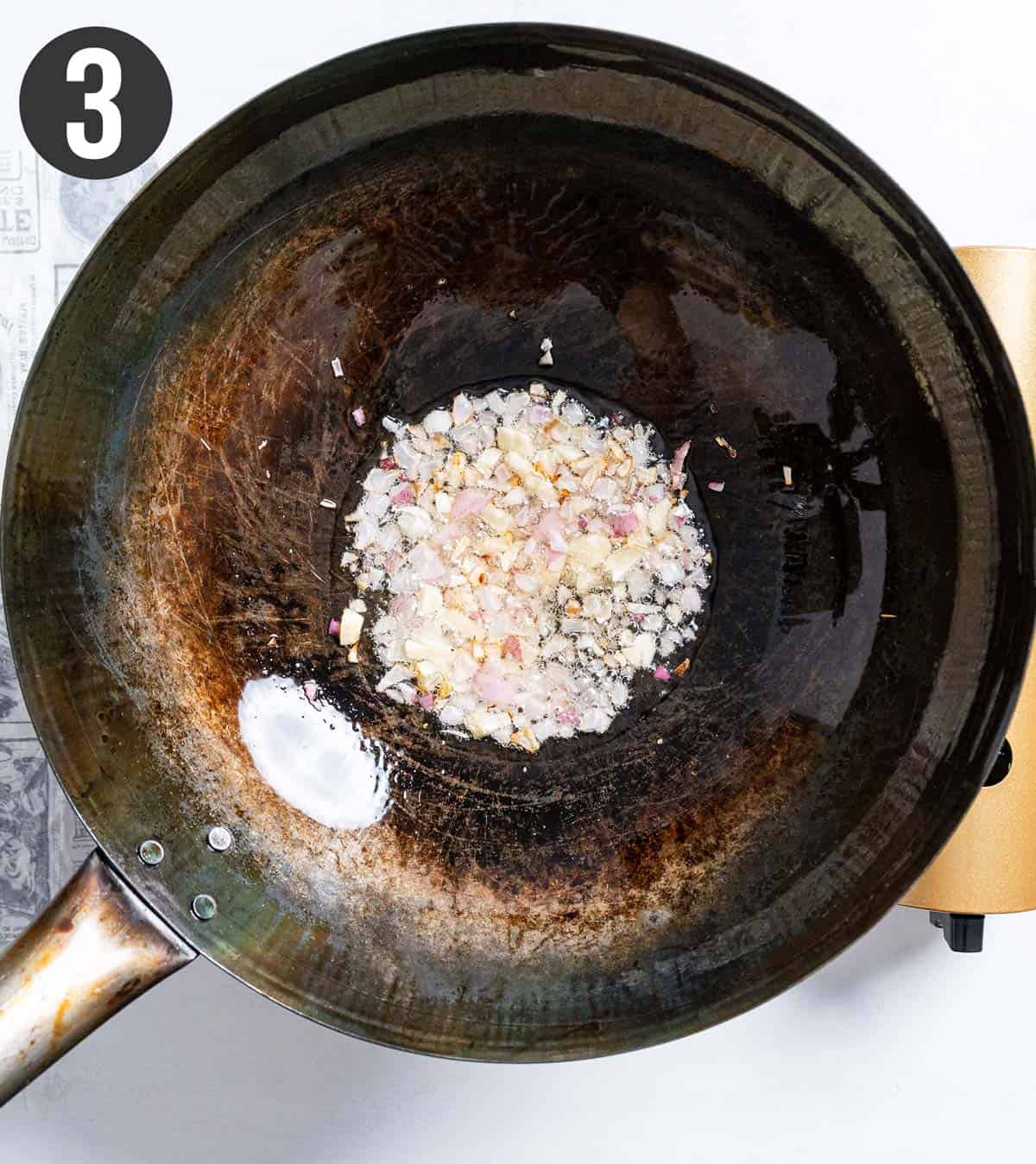
Step 3: Saute aromatics. Heat neutral oil in a wok or a wide casserole pan on the highest heat until smokey. Add in shallots, garlic, and cook until they begin to color.
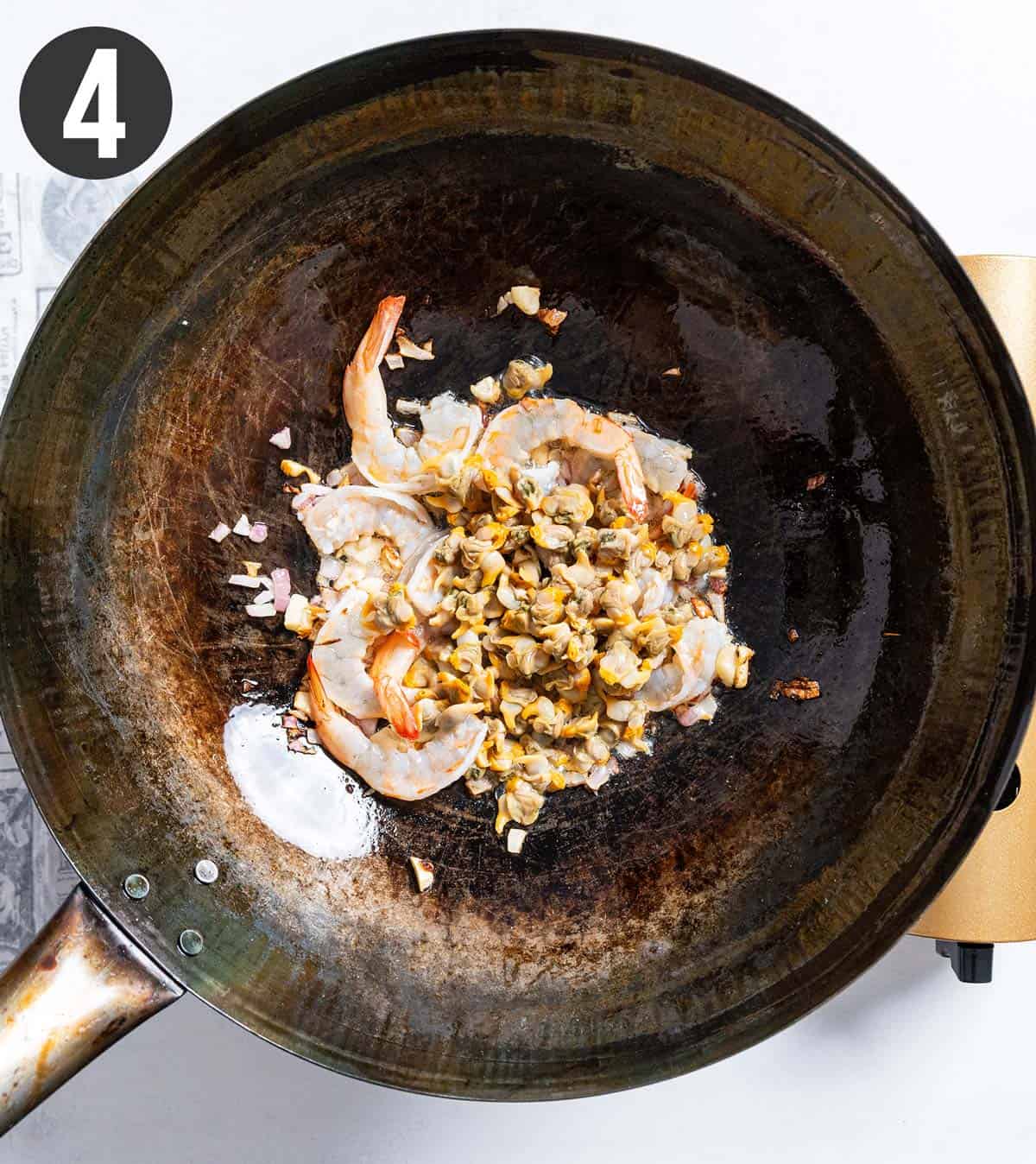
Step 4: Add the proteins. Add shrimps and drained canned cockles. Stir and cook until the shrimps are half-cooked.
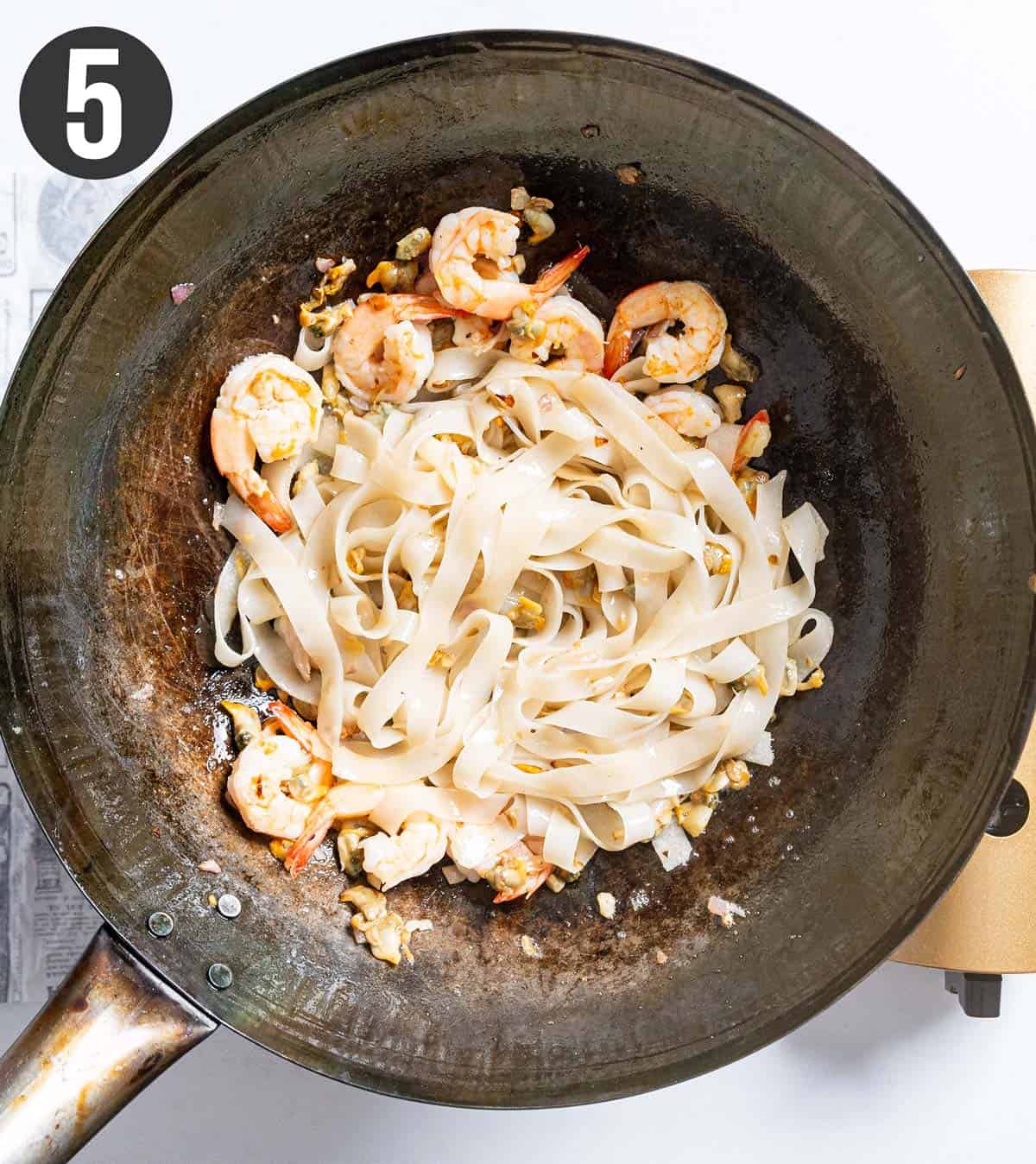
Step 5: Add noodles. Add the noodles, mix everything well, and continue cooking for another 2-3 minutes until they begin to soften.
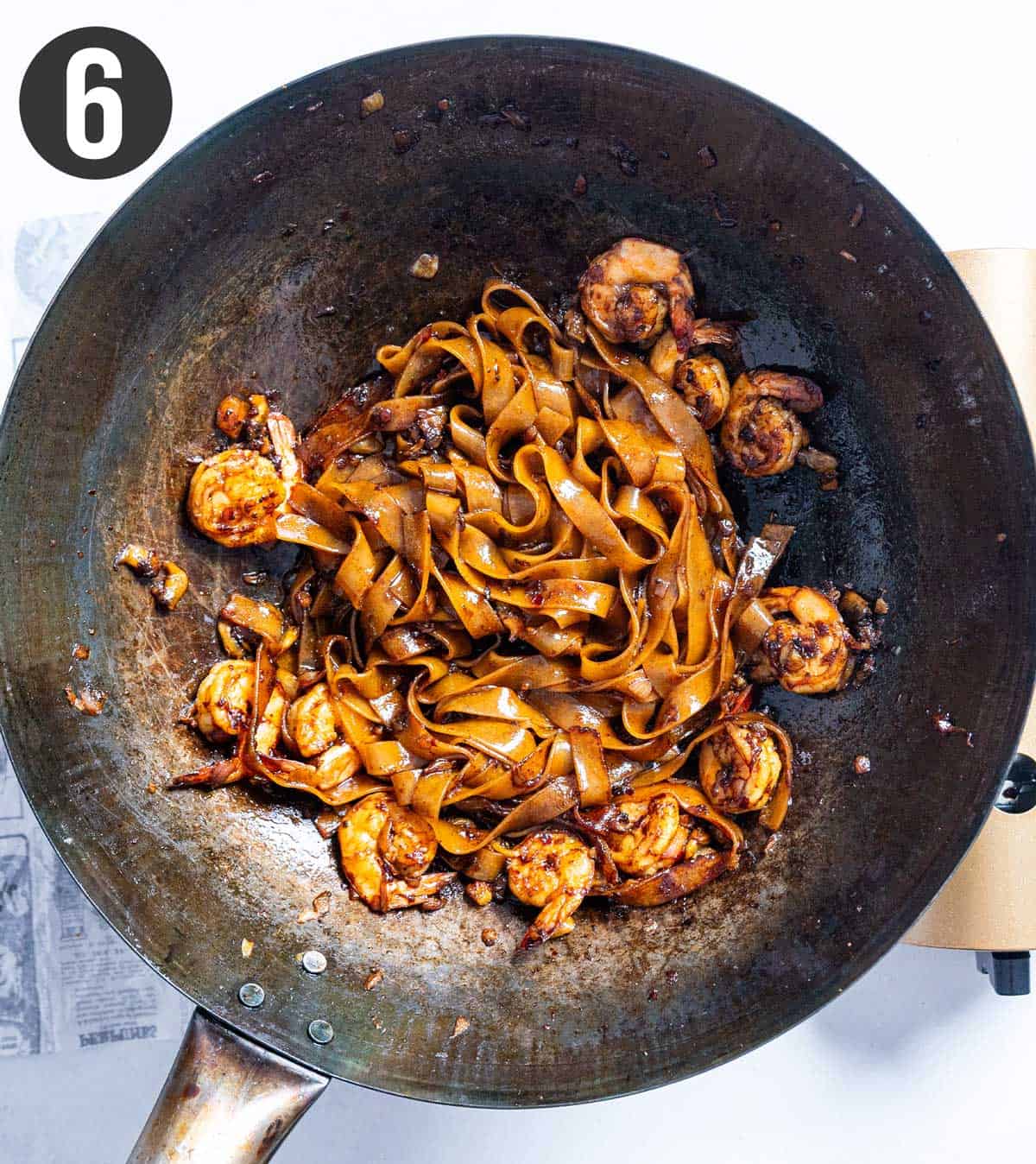
Step 6: Add sauce. Pour the sauce in, mix well, and cook for 1-2 minutes until the noodles are softened. Add a splash of water if needed.
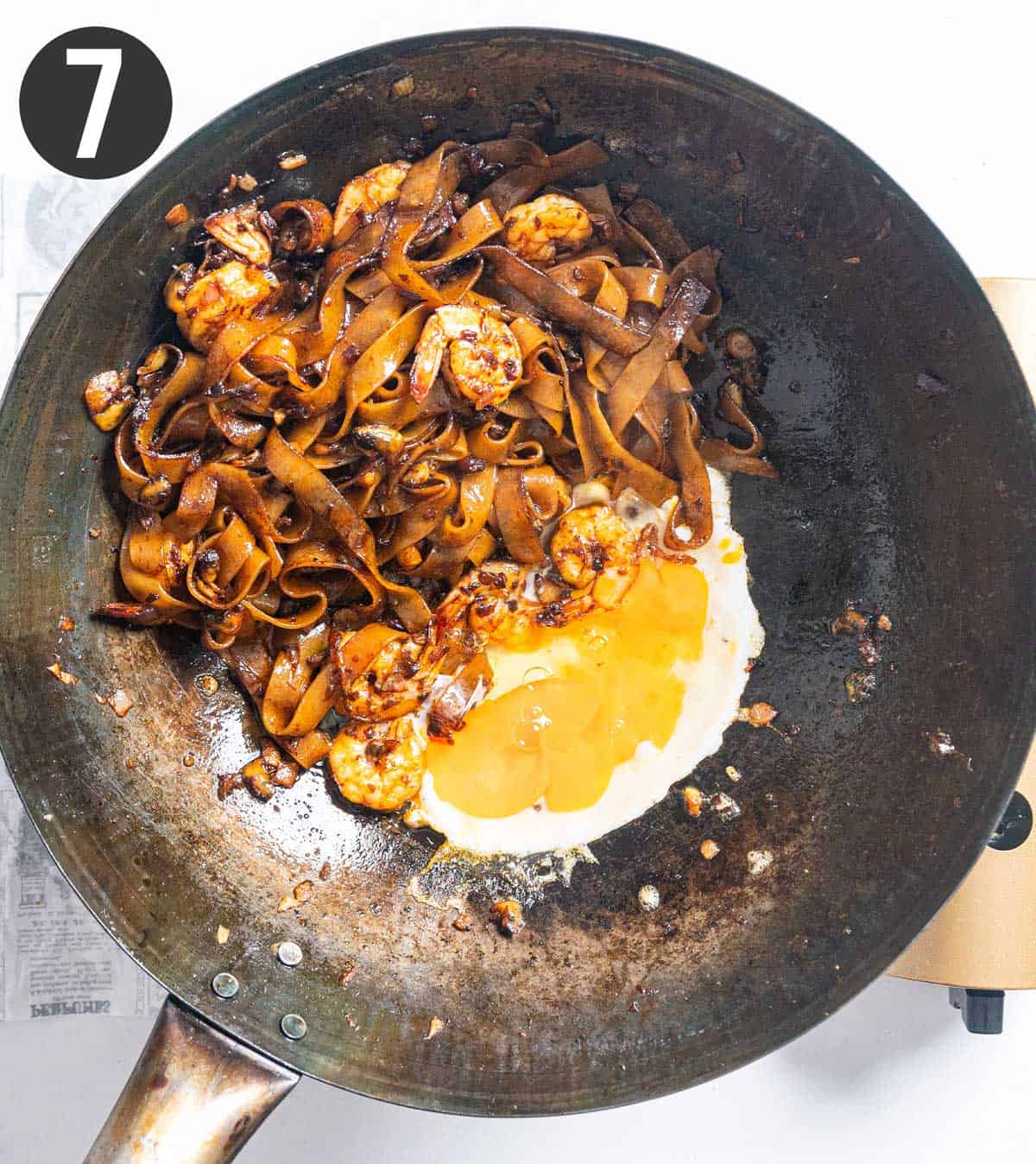
Step 7: Add in eggs. Push everything to one side, add more oil, and crack in the eggs. Leave them untouched until they're half-cooked, scramble them, and mix them with the rest.
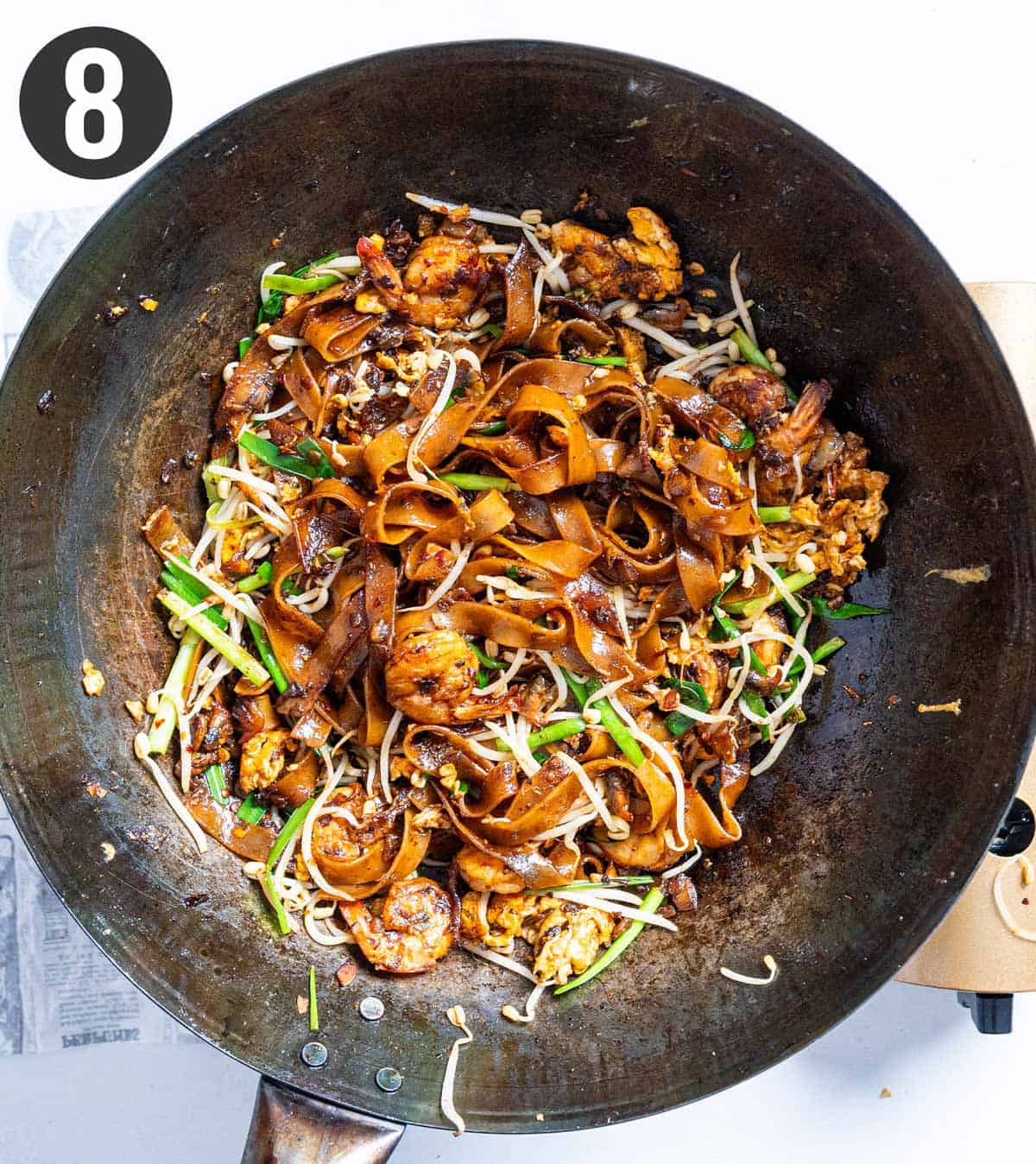
Step 8: Add in veggies. Add the veggies, mix everything for 30 seconds, and turn the heat off. Adjust seasonings if needed. Serve immediately!
Recipe Expert Tips
If you're going to make this Char Kway Teow recipe, follow these top tips!
- Prepare everything before starting to cook. This is a super quick recipe that will take less than 10 minutes to cook. Having everything chopped and measured will make the cooking easier.
- Don't boil the dried rice noodles. Soak the noodles in warm or room-temperature water until pliable to avoid them breaking apart and getting mushy when stir-frying, resulting in beautiful, long strands of soft yet chewy noodles.
- Use high heat. Even at home, we can make a flavorful and smokey char kway teow! Remember to use the highest heat possible when cooking. It will infuse the smokey flavor and cook everything super fast.
- Be gentle with rice noodles. They're delicate and tend to break easily over egg noodles. Limit the tossing and mixing as much as possible. Don't overcook them as they'll turn mushy.
- Use a wide pan or casserole pan, if not using a wok. We want a wide surface for all the ingredients to cook over high heat, preventing overlapping as much as possible, which creates steaming and fogginess.
- Adjust to taste. Char kway teow needs to have a balance of savory, sweet, and, if desired, heat. Different brands of sauces have various levels of saltiness, so adjust to your taste.
How To Serve And Store
Serve—It is best served immediately, piping hot! That's how you'll get the maximum experience of this delightful dish. In Malaysia, it's typically served with lime wedges and more sambal on the side.
Store—For any leftovers, store them in an airtight container in the fridge for up to 4 days. Reheat slowly in the microwave. The noodles tend to break when reheating, but they'll taste equally delicious!
Recipe FAQs
It is a perfect balance of smoky, savory, and slightly sweet flavors. Its umami sauce gives the noodles a rich, almost caramelized taste, with a hint of charred smokiness from the high-heat stir-fry. It's hearty and satisfying, with a soft but chewy texture from the flat rice noodles.
Bean sprouts and garlic or common chives are the best, as they take seconds to cook and don't release liquid into the dish. However, other veggies like cabbage, carrot, and broccoli also work. You'll have to cook them before adding the noodles in.
Use high heat! A carbon steel wok transmits the heat amazingly to cook all the ingredients over high heat, resulting in a charred taste. However, we've cooked this recipe using a Teflon casserole pan on high heat, and it worked great, too, although it was with a lesser charred taste.
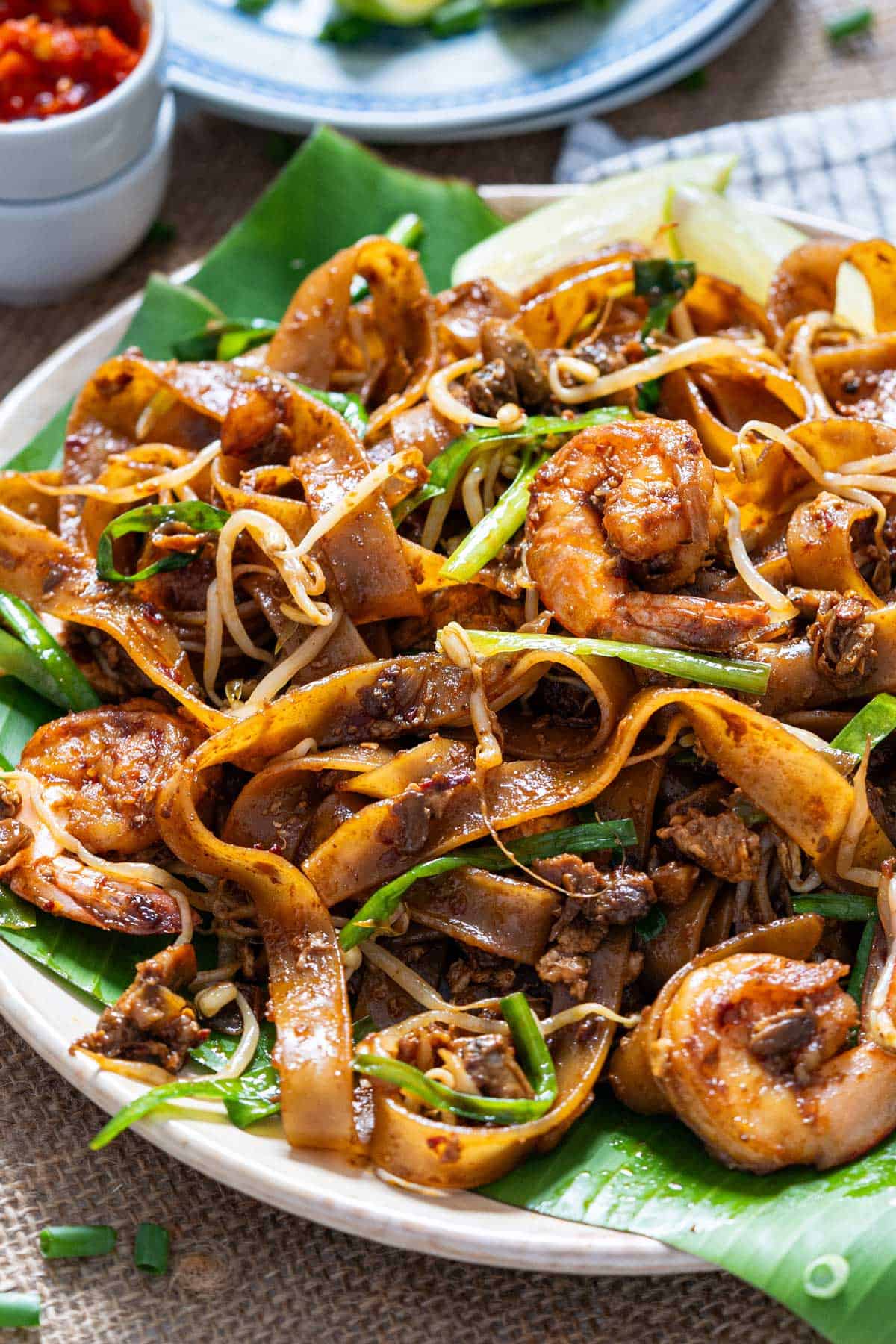
Did you try this Char Kway Teow?
Please leave us ★★★★★ ratings and feedback below in the comment section. We'd love to know how it went, what you liked, or if there's anything we can improve. Share and tag us on Instagram; we'd like to see your creation.
Thank you! -Bea and Marco
Watch How To Make It
📖 Recipe
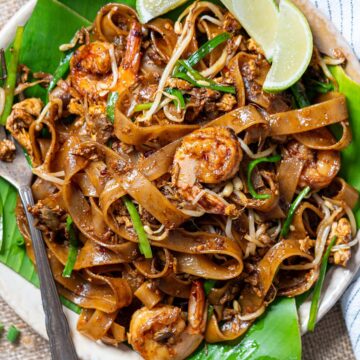
Char Kway Teow
Equipment
Ingredients
Aromatics
- ½ red onion , minced
- 4 garlic cloves , minced
Sauce
- 1 tablespoon sugar
- 1 tablespoon toasted sesame oil
- 1 tablespoon dark soy sauce
- ½ tablespoon less sodium soy sauce
- ½ tablespoon fish sauce
- ½ tablespoon oyster sauce
- 2 tablespoon sambal oelek , see notes
- ½ teaspoon white pepper
Main
- 10 medium-sized shrimps , peeled and deveined
- ⅔ cup (90 g) drained canned natural cockles
- 6 oz (180 g) dried flat rice noodle
- 2 large eggs
- 2 cup (120 g) bean sprouts
- ¾ cup (45 g) garlic chives , that's been cut into 2-inch length
Instructions
Noodles
- Soak the noodles in room temperature water until they're pliable, as shown in the instruction photo and video above, for 30-45 minutes. Alternatively, soak them in warm water (not boiling) for 8-10 minutes. The estimated time varies according to the noodles' brands. Drain before using.
Sauce
- Mix less-sodium soy sauce, dark soy sauce, oyster sauce, fish sauce, sesame oil, white pepper, sugar, and sambal oelek, if using, and set aside.
Cook
- Cook the aromatics by heating neutral oil in a wok or a wide casserole pan on the highest heat until smokey. Add in shallots, garlic, and cook until they begin to color.
- Add shrimps and drained canned cockles. Stir and cook until the shrimps are half-cooked.
- Add the noodles, mix everything well, and continue cooking for another 2-3 minutes until they begin to soften. Pour the sauce in, mix well, and cook for 1-2 minutes until the noodles are softened. Add a splash of water if needed.
- Push everything to one side, add more oil, and crack in the eggs. Leave them untouched until they're half-cooked, scramble them, and mix them with the rest.
- Add the veggies, mix everything for 30 seconds, and turn the heat off. Adjust seasonings, if needed. Serve immediately!
Notes
- Sambal oelek. It's typically on the salty side. If omitting it, use 1 tablespoon each of less-sodium soy sauce, oyster sauce, and fish sauce.
- Prepare everything before starting to cook. This is a super quick recipe that will take less than 10 minutes to cook. Having everything chopped and measured will make the cooking easier.
- Don't boil the dried rice noodles. Soak the noodles in warm or room-temperature water until pliable to avoid them breaking apart and getting mushy when stir-frying, resulting in beautiful, long strands of soft yet chewy noodles.
- Use high heat. Even at home, we can make a flavorful and smokey char kway teow! Remember to use the highest heat possible when cooking. It will infuse the smokey flavor and cook everything super fast.
- Be gentle with rice noodles. They're delicate and tend to break easily over egg noodles. Limit the tossing and mixing as much as possible. Don't overcook them as they'll turn mushy.
- Use a wide pan or casserole pan, if not using a wok. We want a wide surface for all the ingredients to cook over high heat, preventing overlapping as much as possible, which creates steaming and fogginess.
- Adjust to taste. Char kway teow needs to have a balance of savory, sweet, and, if desired, heat. Different brands of sauces have various levels of saltiness, so adjust to your taste.
Nutrition Facts
The nutrition facts provided are an estimate per serving. Accuracy is not guaranteed.
Originally published on Jul 5, 2018. Updated with improved text, recipe, and pictures on Sep 28, 2024.

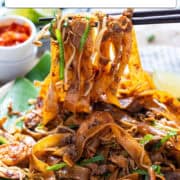
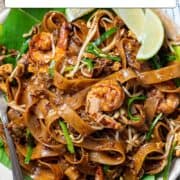
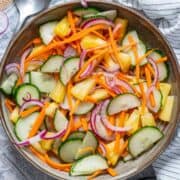
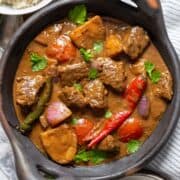


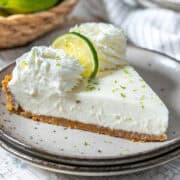
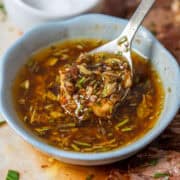

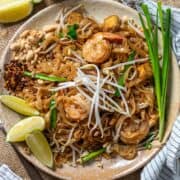


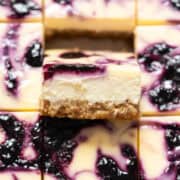

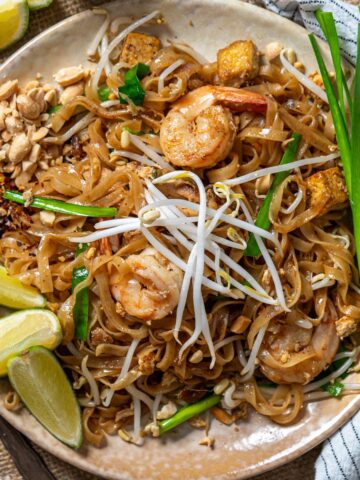
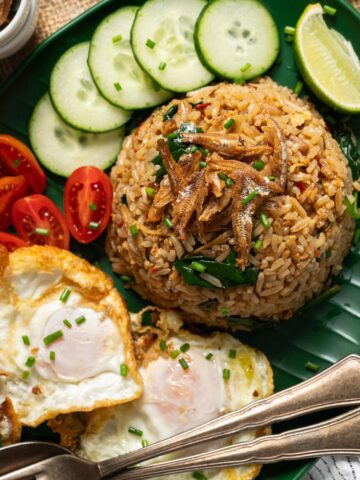
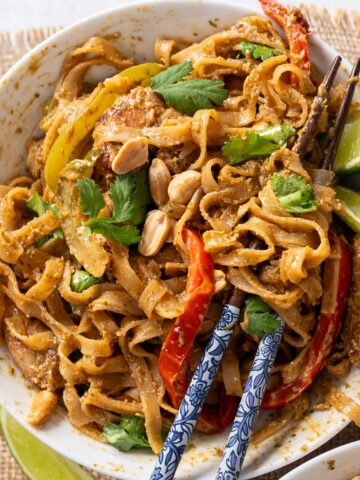
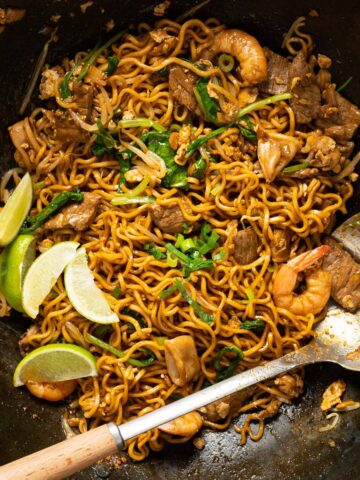
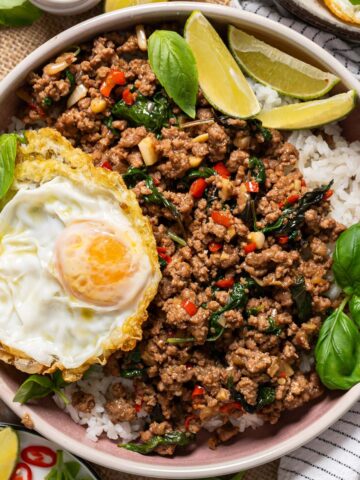
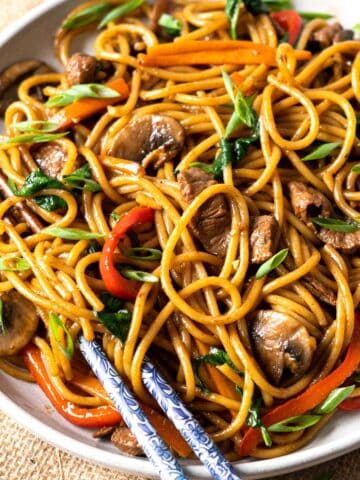
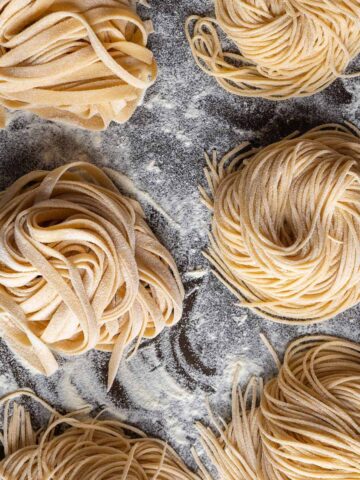
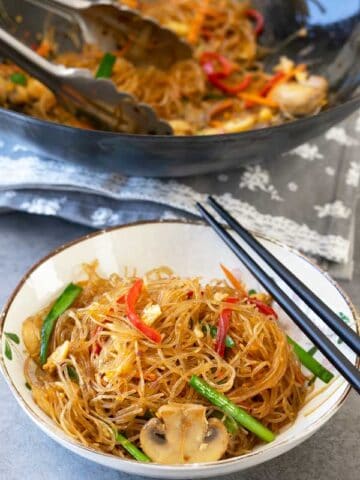
Andy Gillman says
I truly love this recipe because the it tastes different from any other stir fried noodles that I have tried. Thank you for sharing it, the helpful video and detailed instructions.
Bea says
Hi Andy! I'm glad that you gave it a try. Do check out more stir fry recipes here in our website, if you're interested. Thank you so much for your feedback!
Virna says
Kway Teow is one of my favorite dish in Singapore. Since I went back to Phils 3 years ago, Ive been craving singaporean foods that I normally eat from the food courts...This one is legit Kway Teow recipe...I cant believe it's so simple to follow...craving satisfied...highly recommended!!!! Thank you for sharing your recipe....
Bea says
Awesome Virna, I'm glad you liked it!
Melanie Lim says
Hello,
I read your whole post. I like the details you wrote to make me understand what to use and why. This is the best char kueh teow that I cook in my house.
Thank you so much!!
Bea says
Hi Melanie. I'm happy to know that you find the post useful. Personally I like to know what can I substitute here and there if I can't find some ingredients. Thank you Melanie! 🙂